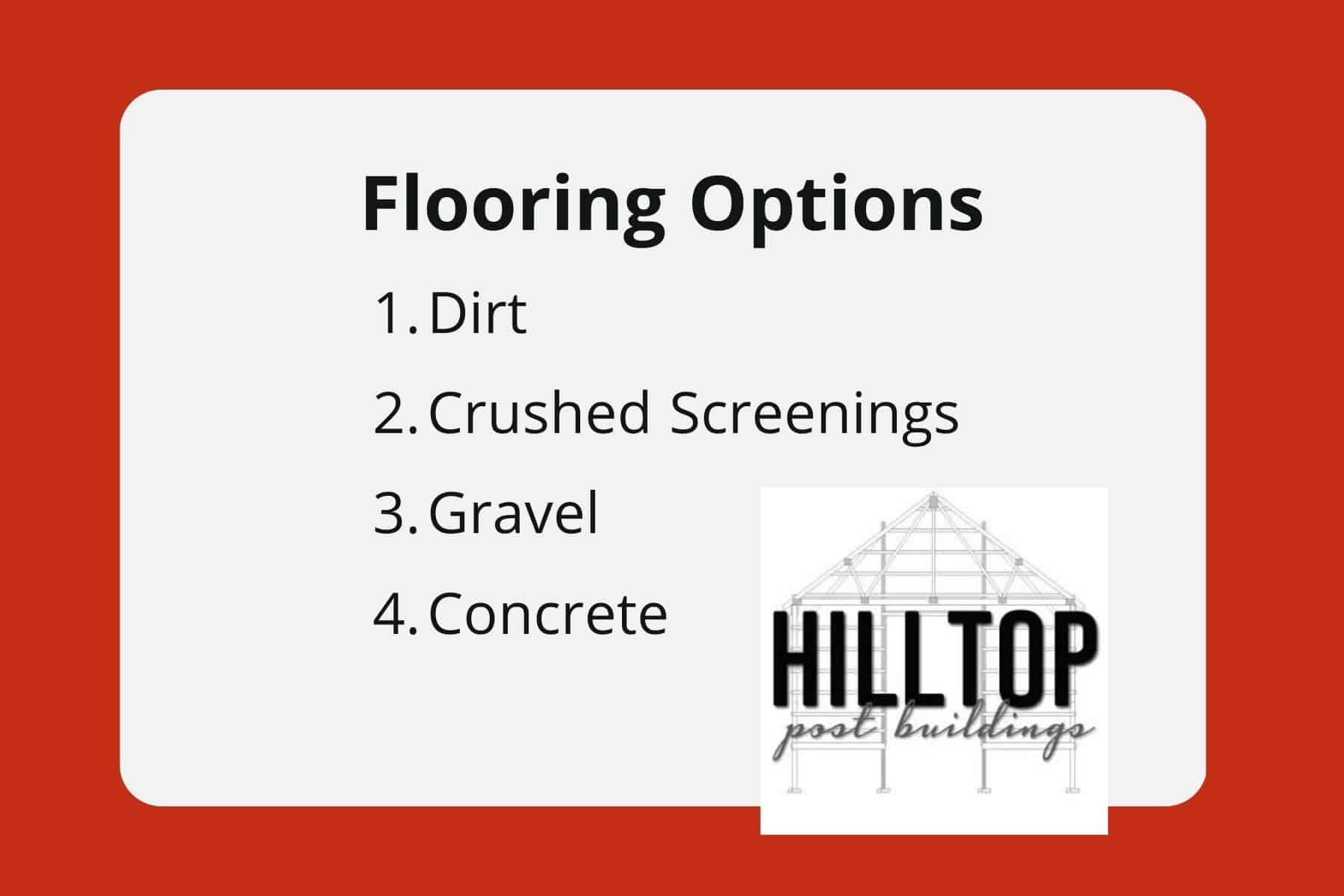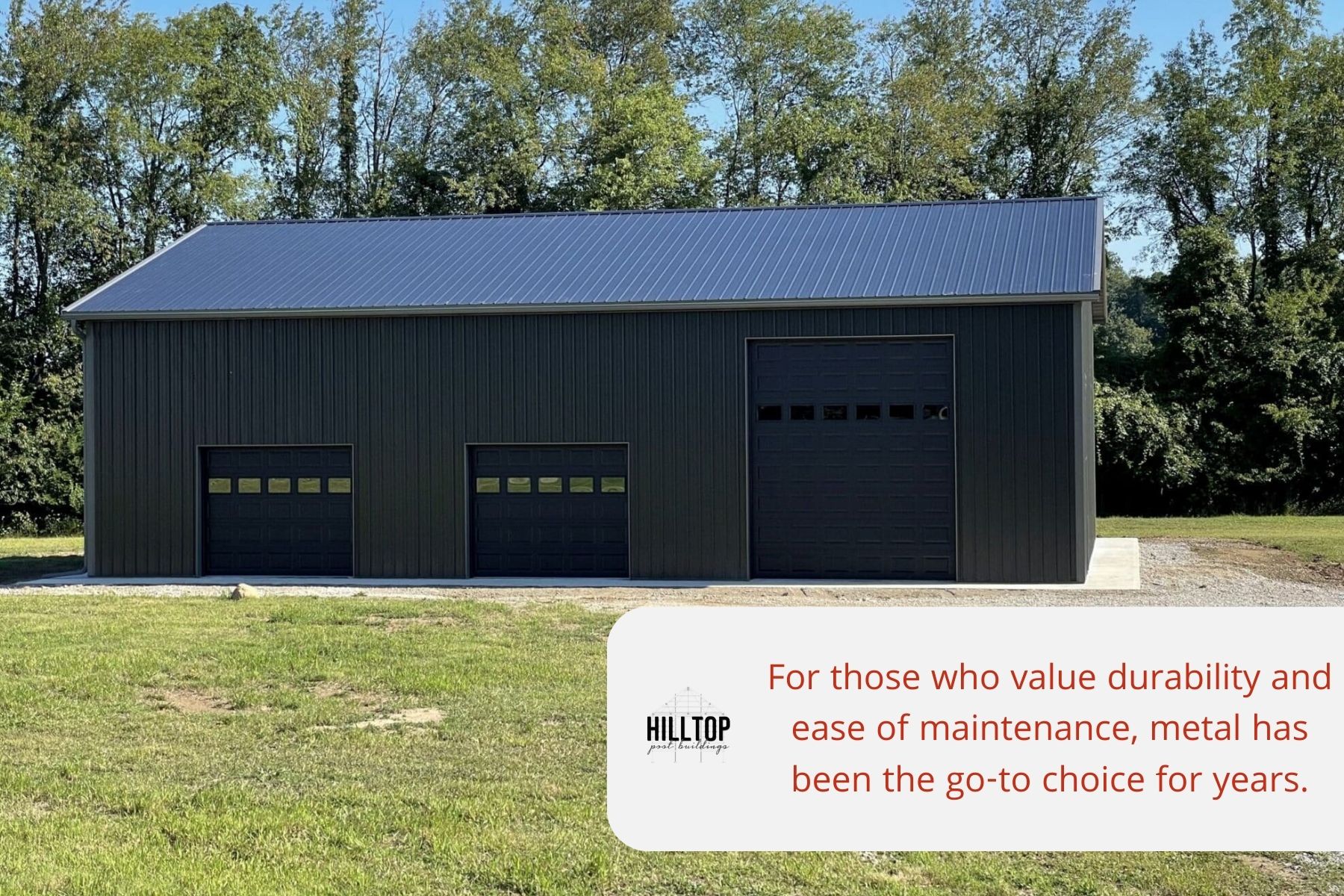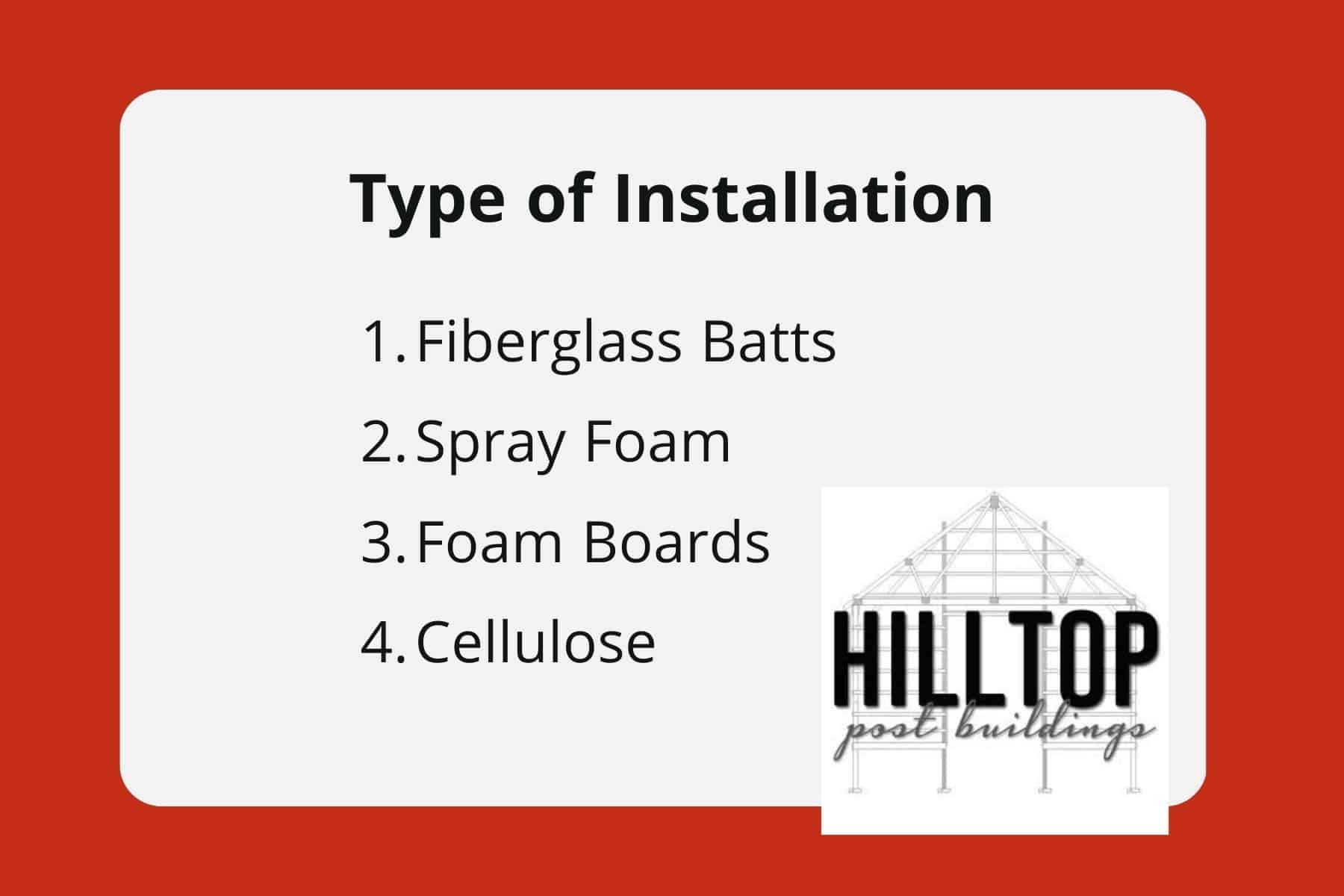The Ultimate Guide to Your Dream Pole Barn
Feeling the squeeze on storage space? Need a reliable shelter for your animals, vehicles, or equipment?
You need a pole barn.
Pole barns are like the superheroes of the construction world—quick, easy, and budget-friendly. Forget the hassle of laying a foundation. Plus, the design options are endless!
At Hilltop Post Buildings we are all about designing and building custom pole barns.
Stick around as we dive into the nitty-gritty of flooring, siding, roofing, and insulation.
Constructing Your Floor: Flooring Options
One cool thing about pole barns? No need for a fancy foundation. This means less headache for both you and the builder. Whatever you choose for your floor, make sure it's on a nice, flat spot with good drainage.
1 - Dirt:
Pros
- Simplified construction
- Budget-friendly
Cons
- As you might guess, it’s a little dirty! This option works best for spaces that don’t need to stay clean.
- Grading and draining are crucial since the ground contains moisture
2 - Crushed Screenings:
Pros
- Inexpensive
- Easy to level
- Pack down firmly
- Perfect for creating a raised bed area
Cons
- Can create a dusty atmosphere
- May need periodic leveling or adding new screenings
- Hard to clean, not great for neat or clean surfaces
3 - Gravel:
Pros
- Low maintenance
- Relatively cheap option
- Excellent for storing equipment
Cons
- Could use occasional leveling or adding new gravel
- May become slippery when wet
- Hard to clean, not great for neat or clean surfaces
4 - Concrete:
Pros
- Ideal for garages, shops, and commercial buildings
- Keeps things quiet and dust-free
- Multiple color options, finishes, and stamps
- Can finish on top of concrete with other types of flooring like vinyl or laminate flooring
Cons
- May involve higher initial costs
- Tends to be slippery when wet

Customizing Your Walls: Siding Options
When it comes to siding on your pole barn, the sky's the limit. No matter which option you use, you will be able to choose just about any color you can imagine. From classic board-and-batten to sleek metal, there's something for everyone.
Board and Batten Siding
Board and batten is the classic go-to for pole barn siding in the US. They call it "barn siding" for a reason – it's been dressing up barns from coast to coast in America for ages.
Here's the deal: imagine wider boards standing tall, nailed up and down on those sturdy horizontal 2x4s that support the posts. Then, you nail on narrow strips of wood, the battens, to fill in the gaps between those boards.
And ta-da! You've got yourself a cool "layered" look that's tough as nails against any weather.
Pros
- Can last a long time
- Traditional and visually appealing
- Versatile color choices
Cons
- Time-consuming to install
- Can be more expensive
- Requires routine maintenance
Metal Siding
Metal siding is another great option for covering your pole barn. For those who value durability and ease of maintenance, metal has been the go-to choice for years.

But some don’t like the manufacturing warehouse vibes that come along with a metal pole barn.
Thankfully, more and more metal styles are becoming available. Now, you can choose from corrugated, standing seam, batten, box rib, and flat metal siding. Plus, more recent upgrades mean you've got a ton of choices: think natural wood grain vibes, lap siding, board and batten, shake, and shiplap.
Oh, and did we mention the color options available? Metal siding has plenty to pick from!
Pros
- Very low maintenance
- Incredibly durable
- Fire resistant
- Environmentally friendly
Cons
- You won't have to wonder if there's rain or hail
- Can dent or scratch, and it is hard to repair an individual piece of metal
- Can be more expensive and more challenging to install
T1-11 Siding
T1-11 siding is like the Swiss Army knife of siding options. Versatile, easy to handle, and a beautiful option. You can paint it any color you fancy, and that natural wood grain look? It's a real eye-catcher. Plus, putting it up is as easy as pie since it's basically plywood siding.
Pros
- Easy to install
- Cost-effective compared to other options
- Can be painted or stained to customize the finish
Cons
- Susceptible to water damage
- Generally more flammable
- Could reduce property value
- Requires significant maintenance
Covering Your Pole Barn: Roofing Options
When it comes to pole barn roofs, they are as vast as they come—just like siding. So, let's explore a few roofing choices and discuss the pros and cons of each. From classic shingles to sturdy metal and everything in between, there's something for everyone's taste buds.

So, let's dive in and find the perfect roof for your barn!
Shingles
Pros
- Readily available and relatively cheap
- Easy and quick to install
- Many style and color options
Cons
- Requires installing plywood over the rafters, which increases cost and installation time
- Shingles can blow off in high winds
Metal Roofing
Pros
- Extremely durable
- Fire-resistant, insect-proof, and won't rot
- Endless color options
- Generally reflective, keeping your barn cooler
Cons
- Increased noise from rain and hail
- More expensive than shingles
- Can dent or scratch easily
Wooden Shingles or Shakes
Pros
- Give a traditional "barn" look
- Excellent insulation properties
- Withstand extremely high wind
- Impact resistant
- Easy to repair
Cons
- May need more maintenance
- Susceptible to rot, algae, and insects
- Can be expensive to install
Synthetic (Composite) Roofing
Pros
- Can create a real-wood or slate appearance
- Lightweight and durable
- Wind-resistant
- Environmentally friendly
Cons
- More expensive than other options
- Vulnerable to cracking in colder weather
- May fade over time
Maintaining Comfort: Insulation Options
Looking to keep things nice and cozy in your pole barn, no matter the season? Well, insulation's your best friend. It's like the unsung hero of barn life: it keeps the temperature just right, prevents pesky condensation or noise from creeping in, and even helps cut down on those energy bills.
So, if you're thinking of heating or cooling your barn, insulating it is the way to go.
Here are a few of the insulation options you can choose from.

Fiberglass Batts
Pros
- Lightweight and inexpensive
- Readily available and easy to install
- Fire-resistant
Cons
- Must be kept dry
- Might require extra framing
- Causes rashes, itchiness in the eyes, coughing, etc.
- Can worsen allergy attacks
Spray Foam
Pros
- Best insulation value
- Fills in gaps in joints, around doors, etc.
- Incredibly durable
- Very energy efficient
Cons
- Most expensive way to insulate
- Requires professional installation
- Chemicals used can be hazardous
Foam Boards
Pros
- Cheapest and most common way to insulate pole barns
- Lightweight and low-cost
- Requires no mechanical fasteners
- Great for keeping out moisture
Cons
- Lose R-value and volume over time
- Joints must be sealed with caulk, tape, or spray foam
Cellulose
Pros
- DIY-friendly
- More resilient, lasts longer, and insulates better than fiberglass
Cons
- Far heavier than fiberglass
- Can retain moisture
- Might require a top layer of other insulation
Conclusion
And there you have it, folks! Your ultimate guide to customizing your very own pole barn. With Hilltop Post Buildings, turning your dream barn into a reality in central Ohio is just a phone call away!
Got any questions or need some expert advice? Don't hesitate to reach out to us today – we're here to help!




